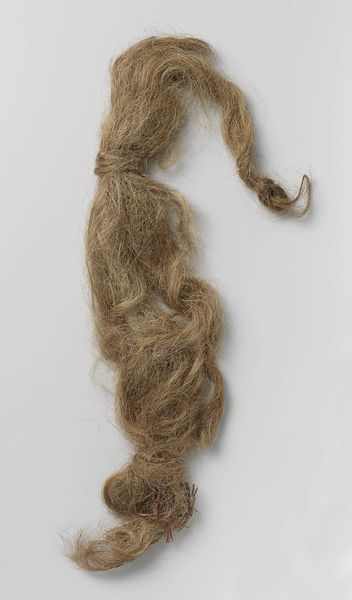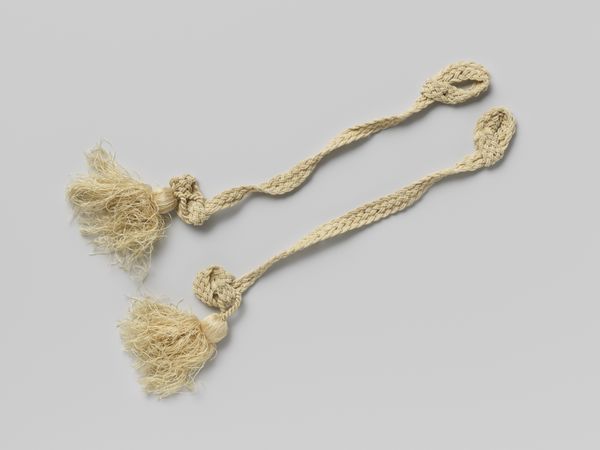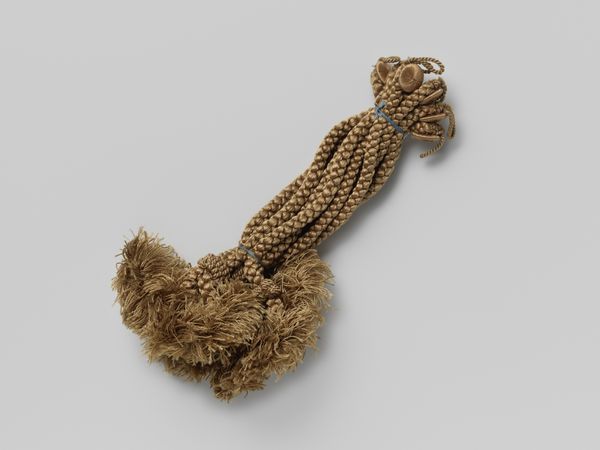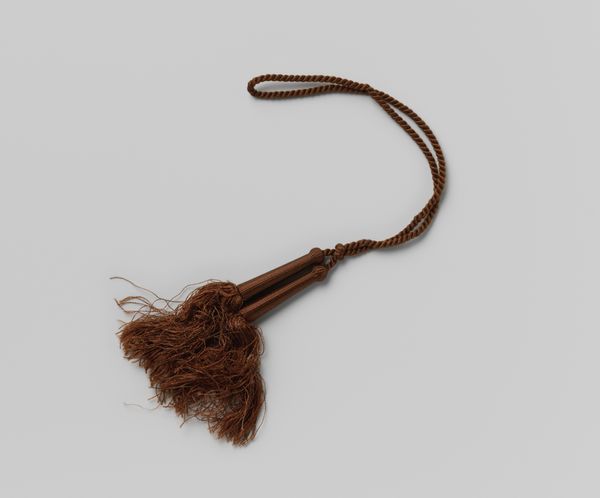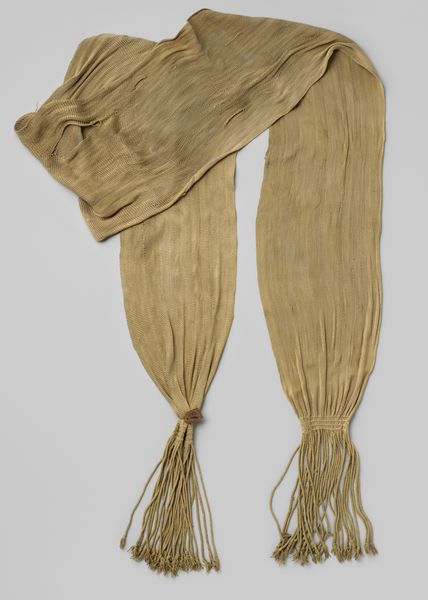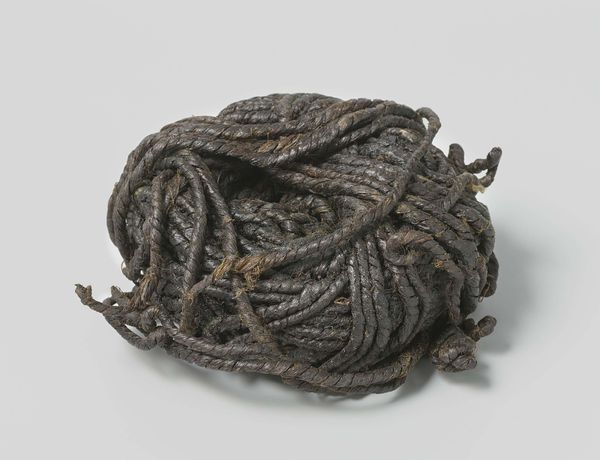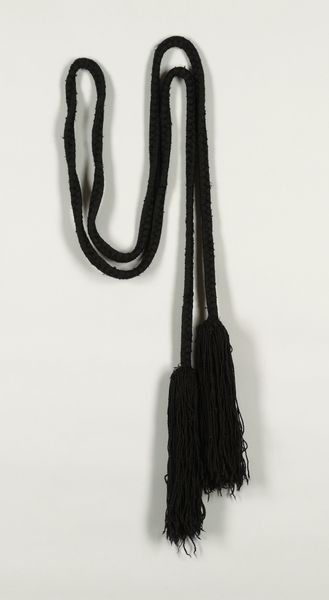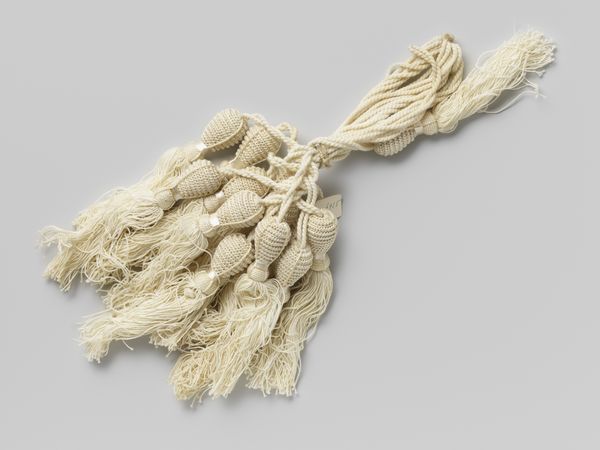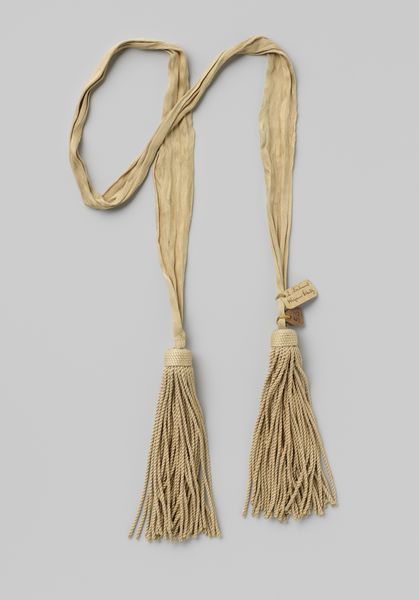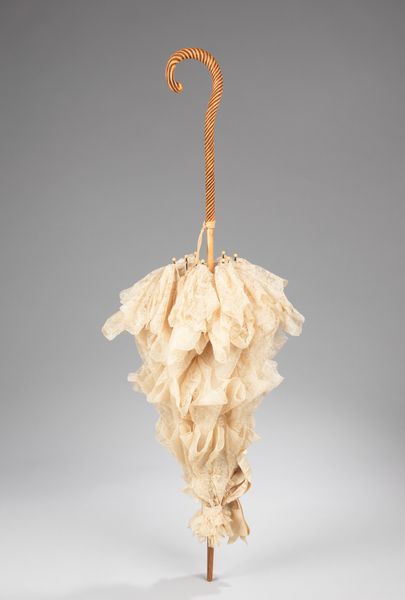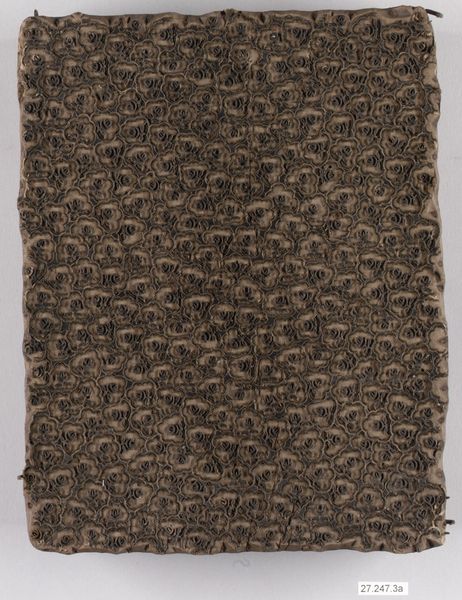
sculpture
#
portrait
#
sculpture
#
sculpture
Dimensions: length 27 cm, width 46 cm, height 7 cm, depth 32.5 cm
Copyright: Rijks Museum: Open Domain
Curator: Here at the Rijksmuseum, we have an unusual portrait, not of a face, but a piece dating from before 1751: "Acht haarvlechten van Prins Willem IV" which translates to Eight Braids of Prince William IV. It's listed as a sculpture. Editor: Well, my immediate thought is that this piece presents a fascinating tension between public and private, strength and vulnerability. We have a relic, a snippet of a man’s physical self, separated, objectified, but somehow still charged with intimate meaning. Curator: Precisely! The historical context here is vital. In an era defined by courtly ritual and performative masculinity, hair was itself a political statement, think Louis XIV and his wigs. The eight braids suggest a complex web of associations, power, lineage, but also, mortality, considering that William IV’s health was in decline. Editor: Yes, but let's look at the physicality. Hair, inherently, is a fibrous, protein-based material that evokes fragility. It speaks to a biological life cycle, growth, death, and decomposition. The tight binding of the braids, likely with thread, hints at processes of preservation, both literal and symbolic. Someone intentionally took the hair and carefully kept it together as a historical piece. Curator: The decision to showcase this almost visceral object speaks volumes. It disrupts the grand narratives usually associated with male rulers. There is a feminization occurring. These braids humanize a powerful man. It almost offers a subversive counter-narrative in art history. Editor: I'm also wondering about the maker, who actually performed the labour. The labor of harvesting, cleaning, braiding, and securing; all intimate acts possibly carried out by a woman. Who made the piece for display purposes is an important part of the piece's historical meaning. Curator: True. Placing that craft, possibly a woman’s craft, at the center of the portrait redefines historical and societal relationships to art itself. Editor: Reflecting on it, I see the work challenges a lot of traditional art perceptions. It brings into question labour and status by recontextualizing this artifact, both raw and delicate, from a biological life, carefully preserved to challenge how society thought about art at the time. Curator: For me, I see how it's still challenging those same art boundaries centuries later! It causes the visitor to ask broader questions. And what more can we ask of art than to pose such compelling, still relevant social inquiries?
Comments
No comments
Be the first to comment and join the conversation on the ultimate creative platform.
